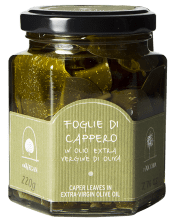Fratepietro’s Bella di Cerignola Olives have a soft texture and a slight sweetness. They might be the perfect crowd-pleasing olive, with their elegant and deeply satisfying umami taste. But they still manage to be mild enough so that even those who claim not to be wild about olives like them. One taste of these olives and we’re sure they’ll be hooked; the firm meaty flesh separates easily from the pit, giving each bite a totally satisfying mouthfeel. The Fratepietro family is the only farm in Italy that handles the whole Bella di Cerignola Olive production process: from pruning the olive trees, to harvesting, to packaging, and to selling the olives. That means that the people responsible for growing the olives are the same people responsible for putting them in jars, you can't get any better than that! ...read more
We can think of no more perfect, effortlessly simple aperitivo than a glass of your favorite wine and a little dish of olives. But they can also be used to add outstanding umami flavor to a whole variety of dishes - mix them into salads or pasta, slice them as a garnish for baked fish or fold them into a thick and spongy focaccia. And since olives contain all the outstanding health benefits we associate with olive oil - healthy fats, antioxidants, and polyphenols - you’ll be thinking of your own ways to add more Bella di Cerignola Olives to your life…
So what makes a black olive black? The black olives are those that are riper and darker at the time of harvest. Fratepietro separates the darker olives from the greener olives and soaks them in a brine made with local salt from the nearby Margherita di Savoia nature preserve for 40-60 days. They are washed many times in a soda wash to take away any trace of bitterness. They are oxidized by being left in water, in strong jet streams of air for 5 days; this turns them black.
Then, at the end, a very small amount of iron - much more less than 150 mg/kilo (the highest quantity permitted by law) - is added to stabilize the color. The amount of this color-stabilizing agent in Fratepietro black olives is lower than the quantity used by conventional olive producers, higher quantities can cause dangerous side effects!
The cultivar takes its name from the town of Cerignola, near Foggia in the region of Puglia, the heel of Italy’s boot and a veritable olive paradise: acre after acre of olive groves dating back hundreds of years and stretching as far as the eye can see. Originally from Spain, these olives arrived in Puglia in 1500 - when Puglia was under the rule of the Spanish empire - and found their perfect habitat. Hot, dry, breezy summers and cool winters provide the perfect growing conditions, allowing the Bella di Cerignola Olive to grow to become the world’s largest olive.










